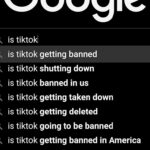Influencer marketing has emerged as a powerful tool in the digital marketing landscape, allowing brands to leverage the reach and credibility of individuals who have established authority and trust within specific niches. This strategy involves collaborating with influencers—individuals who have a significant following on social media platforms, blogs, or other digital channels—to promote products or services. The rise of social media has transformed the way consumers interact with brands, making influencer marketing an essential component of many marketing strategies.
However, despite its popularity, many brands still struggle to implement effective influencer marketing campaigns. The effectiveness of influencer marketing lies in its ability to create authentic connections between brands and consumers. Unlike traditional advertising, which often feels intrusive and impersonal, influencer marketing taps into the established relationships that influencers have with their followers.
When an influencer endorses a product, it often comes across as a personal recommendation rather than a sales pitch. This authenticity can lead to higher engagement rates and conversions. However, the challenge for brands is to navigate the complexities of influencer partnerships, ensuring that their campaigns resonate with the target audience while aligning with the influencer’s personal brand.
Key Takeaways
- Understand your target audience: Before choosing an influencer, make sure you have a clear understanding of your target audience and their preferences.
- Set clear goals: Define your objectives and what you want to achieve through influencer marketing to ensure a successful strategy.
- Choose the right influencer: Look for influencers whose values align with your brand and who have an engaged and relevant audience.
- Collaborate effectively: Communicate clearly with the influencer and establish a mutually beneficial partnership to maximize the impact of your campaign.
- Measure and analyze results: Track the performance of your influencer marketing efforts and use the data to refine your strategy for future campaigns.
Defining Your Goals and Objectives
Setting the Foundation for Success
Before launching an influencer marketing campaign, it is essential for brands to establish clear goals and objectives. These goals will serve as the foundation for the entire campaign, guiding decisions related to influencer selection, content creation, and performance measurement. Common objectives include increasing brand awareness, driving website traffic, generating leads, or boosting sales.
Tailoring Strategies to Achieve Objectives
Each goal requires a different approach and set of metrics for evaluation. For instance, if a brand’s primary objective is to increase awareness, it may focus on partnering with influencers who have a broad reach and high engagement rates. In contrast, if the goal is to drive sales, the brand might collaborate with micro-influencers who have a highly engaged audience that trusts their recommendations.
Aligning Influencer Marketing with Business Goals
By clearly defining objectives upfront, brands can tailor their influencer marketing strategies to align with their overall business goals, ensuring that every aspect of the campaign is purpose-driven. This approach enables brands to maximize their return on investment and achieve meaningful results from their influencer marketing efforts.
Identifying the Right Influencers

Selecting the right influencers is one of the most critical steps in developing an effective influencer marketing strategy. Brands must consider various factors when identifying potential partners, including audience demographics, engagement rates, content style, and alignment with brand values. A common mistake is to focus solely on an influencer’s follower count; however, a smaller but more engaged audience can often yield better results than a larger but less interactive one.
To illustrate this point, consider a beauty brand looking to promote a new skincare line. Partnering with a well-known celebrity influencer may seem appealing due to their vast reach, but if their audience does not align with the brand’s target demographic—such as younger consumers interested in affordable skincare—then the partnership may not be effective. Instead, collaborating with a micro-influencer who specializes in skincare and has a dedicated following of beauty enthusiasts could lead to more authentic engagement and higher conversion rates.
Brands should also utilize tools and platforms that provide insights into influencer performance metrics to make informed decisions.
Crafting Authentic Content
Once the right influencers have been identified, the next step is to collaborate on creating authentic content that resonates with both the influencer’s audience and the brand’s messaging. Authenticity is paramount in influencer marketing; followers can quickly detect when content feels forced or overly promotional. Therefore, brands should allow influencers the creative freedom to present products in a way that aligns with their personal style and voice.
For example, if an outdoor apparel brand partners with an adventure travel influencer, it would be more effective for the influencer to showcase the products in action—such as wearing them during a hiking trip—rather than simply displaying them in a static post. This approach not only highlights the product’s functionality but also creates a narrative that engages viewers. Additionally, brands should encourage influencers to share their genuine experiences with the product, as personal stories can significantly enhance relatability and trust.
Establishing Clear Communication
Effective communication between brands and influencers is essential for successful collaborations. Establishing clear expectations from the outset can help prevent misunderstandings and ensure that both parties are aligned on campaign goals, deliverables, timelines, and compensation. Brands should provide influencers with comprehensive briefs that outline key messages, target audiences, and any specific requirements for content creation.
Moreover, maintaining open lines of communication throughout the campaign can foster a positive working relationship. Regular check-ins can help address any concerns or adjustments needed along the way. For instance, if an influencer encounters challenges while creating content or if there are shifts in audience sentiment that could impact the campaign’s direction, timely communication allows for quick adaptations.
This collaborative approach not only enhances the quality of the content produced but also strengthens the partnership between the brand and influencer.
Measuring Success

Establishing Key Performance Indicators (KPIs)
To determine the effectiveness of an influencer marketing campaign, brands must establish key performance indicators (KPIs) that align with their initial goals and objectives. Common metrics include engagement rates (likes, comments, shares), reach (impressions), website traffic generated from influencer links, conversion rates (sales or sign-ups), and return on investment (ROI).
Analyzing Campaign Results
By analyzing these metrics post-campaign, brands can gain valuable insights into what worked well and what could be improved for future initiatives. For example, if a campaign aimed at increasing brand awareness resulted in high engagement rates but low conversion rates, it may indicate that while the content resonated with audiences, there was a disconnect between interest and action.
Refining Strategies for Future Success
In such cases, brands might consider refining their call-to-action strategies or enhancing their landing pages to better convert interested consumers into customers. Conversely, if a campaign successfully drove sales but had lower engagement rates, it may suggest that while the messaging was effective for conversion, it lacked broader appeal for brand awareness.
Common Mistakes in Influencer Marketing
Despite its potential benefits, many brands fall into common pitfalls when executing influencer marketing campaigns. One prevalent mistake is failing to conduct thorough research on potential influencers before collaboration. Brands may overlook important factors such as audience demographics or past partnerships that could affect their campaign’s success.
Additionally, some brands may prioritize quantity over quality by partnering with multiple influencers without considering how well they align with their brand values or target audience. Another frequent error is neglecting to establish clear guidelines for content creation. Without specific direction, influencers may produce content that does not accurately reflect the brand’s messaging or values.
This misalignment can lead to confusion among consumers and dilute brand identity. Furthermore, brands sometimes underestimate the importance of long-term relationships with influencers; one-off collaborations may yield short-term results but fail to build lasting trust and loyalty among audiences.
Adapting to Trends and Changes
The digital landscape is constantly evolving, and so too are consumer preferences and behaviors. Brands must remain agile and adaptable in their influencer marketing strategies to stay relevant in an ever-changing environment. This includes keeping abreast of emerging trends within social media platforms and understanding how shifts in consumer sentiment can impact influencer partnerships.
For instance, as platforms like TikTok gain popularity among younger audiences, brands may need to explore collaborations with influencers who excel in short-form video content rather than traditional Instagram posts. Additionally, trends such as sustainability and social responsibility are increasingly influencing consumer purchasing decisions; brands that align themselves with influencers who advocate for these values can enhance their credibility and appeal to socially conscious consumers.
In conclusion, while influencer marketing presents significant opportunities for brands to connect with consumers authentically, it requires careful planning and execution to avoid common pitfalls. By defining clear goals, selecting appropriate influencers, crafting authentic content, maintaining open communication, measuring success effectively, avoiding common mistakes, and adapting to trends, brands can develop robust influencer marketing strategies that drive meaningful results. As this dynamic field continues to evolve, staying informed and flexible will be key to harnessing the full potential of influencer partnerships in achieving business objectives.
FAQs
What is influencer marketing?
Influencer marketing is a type of marketing that focuses on using key leaders to drive a brand’s message to the larger market. These individuals are often referred to as influencers and have a significant following on social media platforms.
What is an influencer marketing strategy template?
An influencer marketing strategy template is a framework that outlines the key components of an influencer marketing campaign. It typically includes goals, target audience, influencer selection criteria, content strategy, budget allocation, and performance measurement.
What are some common mistakes in influencer marketing strategies?
Common mistakes in influencer marketing strategies include choosing influencers solely based on their follower count, not aligning the influencer’s values with the brand’s values, lack of clear communication and expectations, and not measuring the campaign’s performance effectively.
How can I improve my influencer marketing strategy?
To improve your influencer marketing strategy, consider focusing on building authentic relationships with influencers, aligning their values with your brand, setting clear goals and expectations, measuring the campaign’s performance, and continuously optimizing based on the results.
What are the benefits of a well-executed influencer marketing strategy?
A well-executed influencer marketing strategy can lead to increased brand awareness, higher engagement with the target audience, improved brand credibility, and ultimately, higher sales and conversions. It can also help in reaching new and niche audiences.















